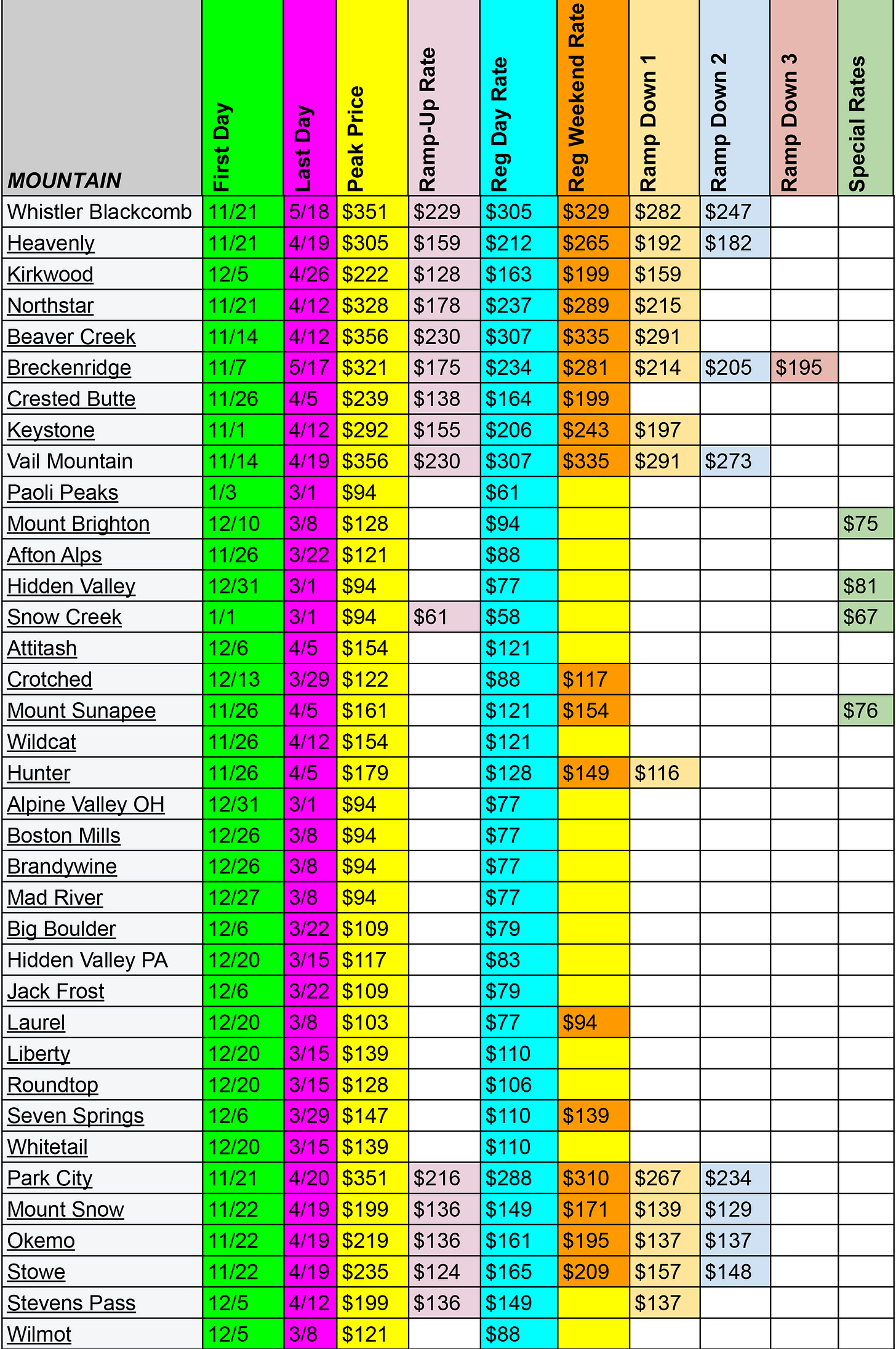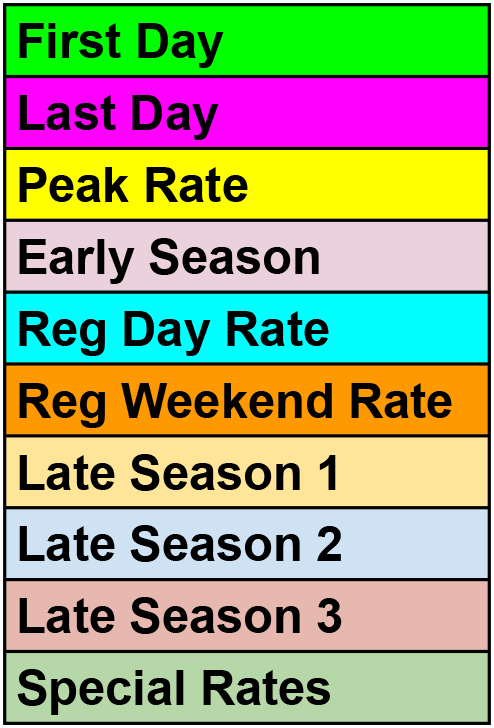What Vail Resorts’ Daily Lift Ticket Rates Tell Us About the Best Times to Ski
An exercise in data analysis, or maybe art criticism (or perhaps madness)
This is kind of beautiful:

What the hell is it? Good question. It’s a grid tracking the walk-up single-day lift ticket prices at every Vail-owned North American ski area from Nov. 1, 2025 to May 18, 2026. I assembled this for an August post analyzing Vail’s anticipated 2025-26 peak rates and how half-off Epic Friend discounts would rationalize them. It was meant as a simple reference doc, but the more I looked at it, the more it became a skeleton key to understanding broader skier patterns. The day-to-day lift ticket prices are notionally interesting, but the real takeways, I think, are in the wide-view snapshot I inserted above. So let’s decode it.
First: the colors. For all the complexity of dynamic pricing, Vail deploys a surprisingly uniform and straightforward logic to its day-of ticket rates. With a few exceptions, seasonlong pricing at each Vail-owned ski area follows this general pattern: an early-season ramp-up rate, which transitions around mid-December to regular-season weekday and weekend rates. Weekend prices are often but not always the same as peak-day rates. In late March, pricing begins to ramp down for the remaining open ski areas, and continues to do so in up to three stages through May. Here’s a color key:
And here’s the order of the ski areas in the big chart above, along with their pricing on each tier (Whistler prices are in Canadian dollars):

OK neat. But so what? It’s just a price grid, and not a terribly useful one for a newsletter audience that probably purchased their 2025-26 ski passes seven months ago. But when you zoom out and reduce the grid to colors aligned with the calendar, a code materializes, a seasonlong ski-traffic map that we all know isn’t accurately reflected in the traditional bucket of Christmas/MLK/Presidents blackout dates. By accident, my tracking of Vail’s fluctuating lift ticket prices doubles as a travel rubric, a loose guide to when a skier should – and should not – plan ski days for minimal crowds. And since Vail operates in most core U.S. ski regions, and deploys different pricing patterns across each, we can assume the company’s resort-by-resort ticket peaks and valleys mirror - or at least echo - regional traffic and visitation patterns, meaning we can extract what are likely universal guidelines for ski-travel planning, not just hints on when to specifically visit Epic Pass mountains. Here are five general observations, any of which can be foiled by a rogue powder day or overturned turnip truck:


